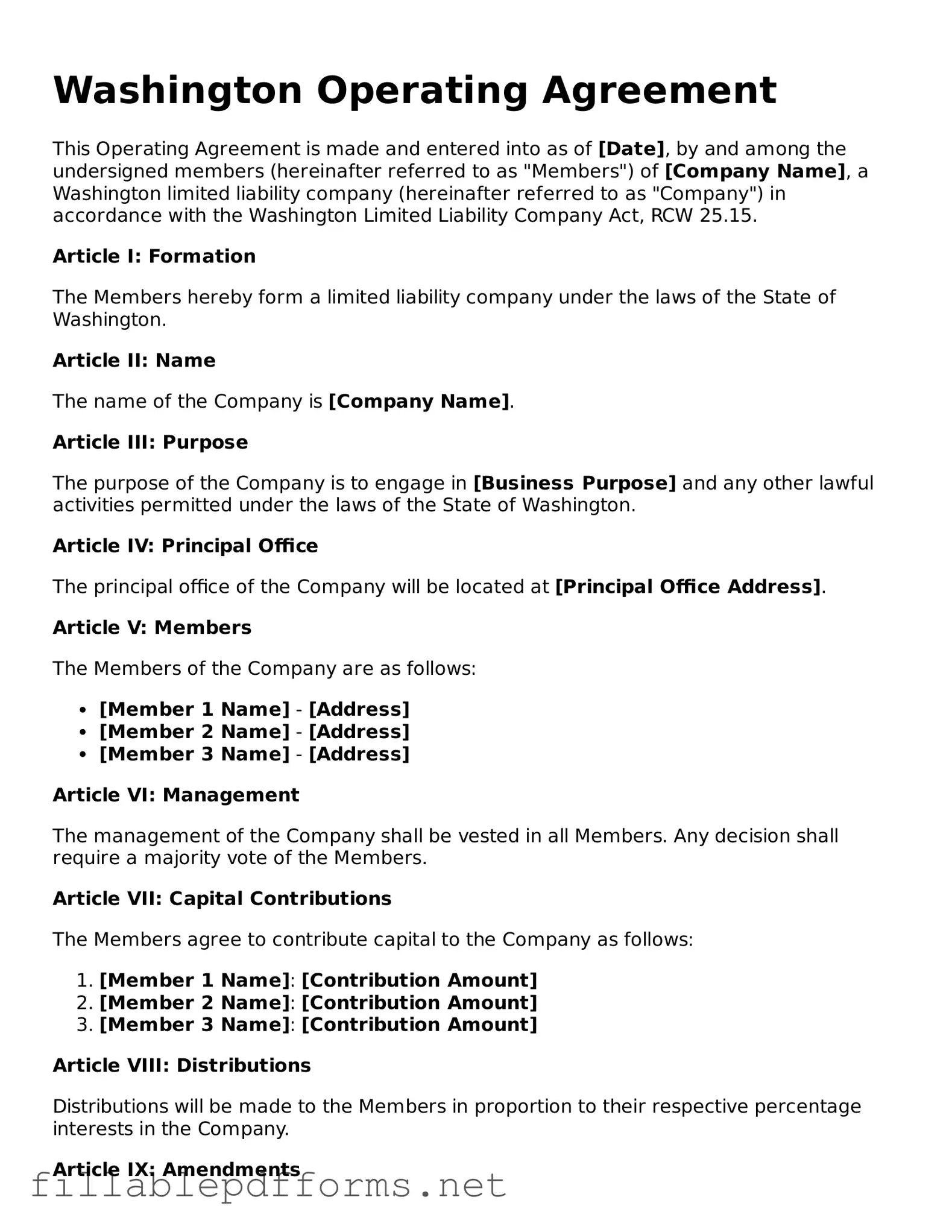Attorney-Verified Operating Agreement Form for Washington State
The Washington Operating Agreement is a legal document that outlines the management structure and operational guidelines of a limited liability company (LLC) in Washington State. This form serves to define the roles and responsibilities of members and managers, ensuring clarity in decision-making processes. Understanding its components is essential for effective governance and compliance with state regulations.
Launch Editor Here
